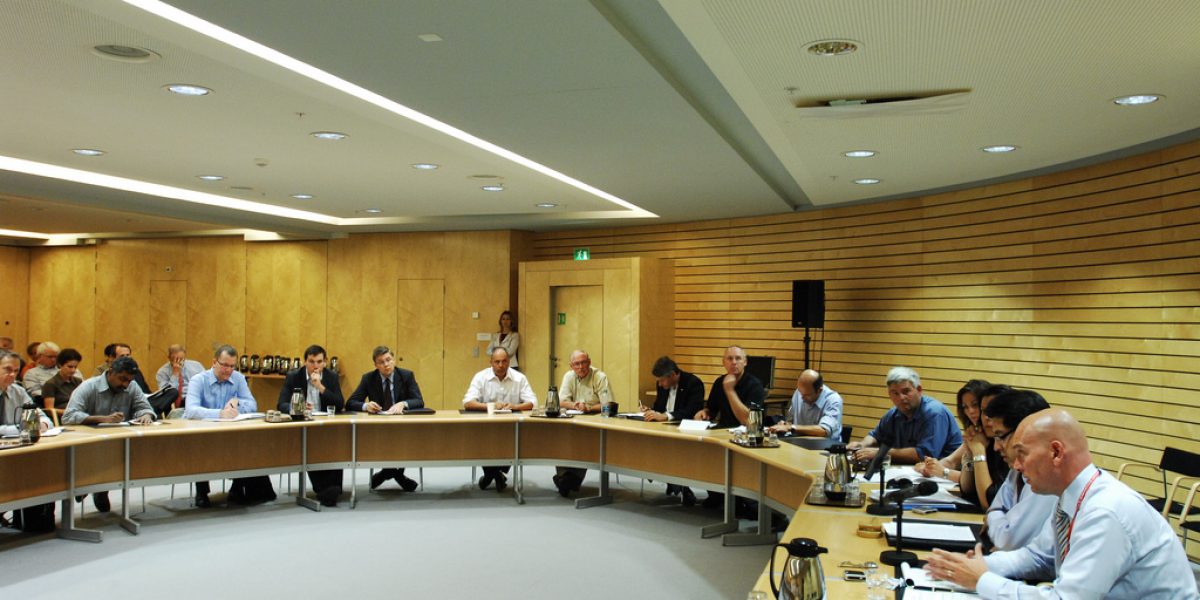The agreement on agriculture consists of three “pillars”: domestic support (subsidies, further divided into non-trade and trade distorting); market access (tariffs and quotas); and export subsidies. Agreement on eliminating export subsidies has been obtained in principle subject to disciplines to be negotiated on US export credits and food aid (the latter will yet prove problematic). Most of the recent action has been on domestic support and market access.
Put crudely, both the European Union (EU) and the US have to deliver substantial reductions in actual (not bound) levels of trade-distorting domestic support if the Brazil-India led G-20 is to reciprocate in other areas. The US’s recent offer would not deliver actual reductions and leaves open the possibility that remaining support could be concentrated on a few, heavily subsidised, products.
The EU has dug its heels in around a weak market access offer. Taken together with its highly problematic subsidy regime this has attracted many of its trading partners’ ire. That has not stopped the commission from demanding concessions from the larger developing countries, especially those in the G-20 (including SA) in industrial goods and services.
The G-20, correctly, argues that it should not have to pay for removing the major source of distortion in global trade. As a principled position this is fine; but from the standpoint of realpolitik does it hold up?
The EU’s room for manoeuvre is tightly constrained by internal politics. The commission argues that the substantial overhaul of the Common Agricultural Policy they delivered in 2003, prior to the Cancun summit, in combination with their latest (highly conditional) offer is as far as they can go. Apparently France has mobilised an internal coalition of 14 countries to support their call for no more concessions. On the surface things look gloomy.
Yet some observers think the commission can go further. A key consideration is the EU’s budget: with ten new members on board the commission cannot sustain current subsidy levels into the foreseeable future. A decision must be taken soon. Sometime next year this matter will come to a head.
2006 is the year in which everyone acknowledges the round must be concluded. In mid-2007 US President George Bush’s trade promotion authority (TPA) — restricting Congress to up or down votes on package deals — expires. It is highly uncertain whether it will be renewed. The process will begin in the first quarter of 2007. The US Farm Bill also expires in 2007, leaving 2006 for Congressional negotiations over what will replace it. In the absence of an overarching deal on agriculture in the WTO expect Congress to be militant. There are budgetary pressures in the US, necessitating spending cuts (or tax rises), but the question is whether a lame duck president will push for either? I doubt whether Congress, with an eye on elections next year, would oblige.
Underlying these dynamics in the two major players is a growing angst with globalisation. Fuelling these concerns is China’s rise, and associated protectionist pressures. The long-term calculation being made in Washington and Brussels is that their export futures lie in services and investment, and advanced industrial goods. Without progress on these fronts retaining agricultural supports and negotiating access to key markets via bilateral deals (in which they hold most of the cards) is a politically attractive alternative. In short, there are limits to how far these trading superpowers are prepared to go.
So how should SA position itself? Our response should be determined by cold calculation of the national interest. It is not clear that this round will serve that interest.
We do not have a major export interest in agricultural goods. The sector is supply-constrained and increasingly sensitive owing to land reform processes. The “price” for securing deeper subsidy and tariff cuts in agriculture, apart from eroding our current preferential access into the EU market via the TDCA and GSP, will be deeper openings in industrial goods and some service sectors. In my view we should be doing this unilaterally rather than having it imposed on us via an externally-driven process — but at least the movement will be in the right direction. However, from the trade negotiators’ standpoint, and that of many sectoral interests, this price may prove too high. The “China factor” is making its presence felt here, too.
Furthermore, our neighbours generally do not want to liberalise anything, and they do not want major liberalisation in the EU market for fear of eroding current preferential access. Yet increasingly our manufactured and processed agricultural exports go to the region. The same applies to our outward investment thrust, much of which is in services. Given the limited size of the domestic market it is imperative that the global (and African) expansion of our corporate footprint finds support through multilateral liberalisation. Maintenance of the status quo in Africa, as the Africa Group desires, would be prejudicial to our economic interests. The question is how far our negotiators can push this line in light of the centrality of our African foreign policy.
So while this round will deliver market access gains and remove some of the distortions in global trade, it will not deliver much in the way of substantive benefit for our export community. All this should cause us to reconsider our free trade agreement strategy.








